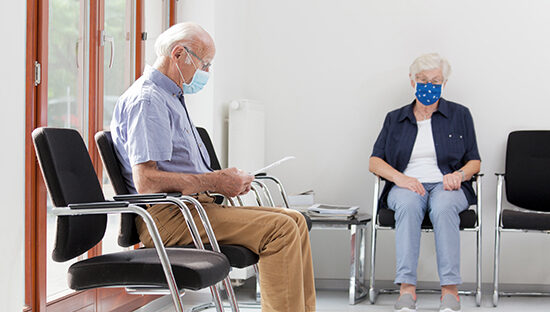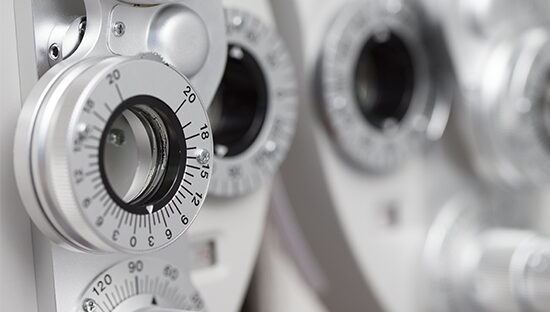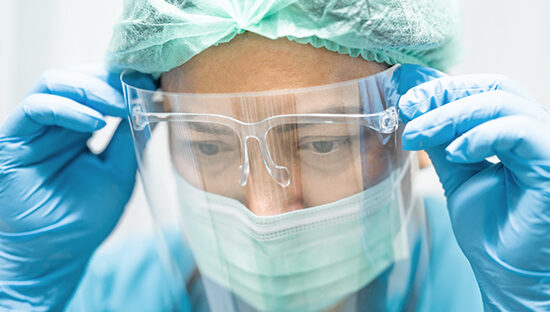
The introduction of new surgical hubs to tackle the backlog issue of missed treatments has been nothing but great news. Specialist surgery hubs can ensure treatments and surgeries will continue as scheduled even in the presence of new outbreaks or a new pandemic, reducing the pressure on healthcare staff, treatment backlogs and patient waiting times.
However, these surgical hubs, just like any other space but particularly so in a healthcare environment, can be contaminated and manual cleaning alone does not resolve the issue. Manual cleaning is highly dependent on personnel and is always prone to error. Such errors can be avoided by implementing a decontamination technology alongside manual cleaning which can improve infection reduction rates and help avoid human error.
Hospital-acquired infections (HAIs) and surgical site infections (SSIs) impact admission length, therefore increasing the cost of care, both financially and in staff time. Reducing infection rates in the operating room is vital in combating these impacts. It was reported previously that it is four times more expensive to treat an infected total joint arthroplasty than to perform the primary total joint replacement.
Surgical site infections (SSIs)
SSIs have been shown to compose up to 20% of all hospital acquired infections (HAIs). At least 5% of patients undergoing a surgical procedure develop an SSI. Such infections may range from a spontaneously limited wound discharge within 7 to 10 days of an operation, to a life-threatening postoperative complication, such as a sternal infection after open heart surgery.
Enterobacterales including Escherichia coli, Klebseilla, Salmonella and shigella continued to make up the largest proportion of causative organisms across all surgical categories in 2019/20 for both superficial (29.8%) and deep or organ/space (26.2%) SSIs. However S. aureus still contributes to a large proportion of deep or organ/space SSIs (24.2%).
Transmission can be facilitated through the environment (air, surfaces and humans) by multi drug-resistant organisms (MDRO), including vancomycin-resistant Enterococci (VRE), Clostridium difficile, Acinetobacter spp., methicillin-resistant Staphylococcus aureus (MRSA), Norovirus and the recent Coronavirus (SARS-CoV-2). These pathogens can thrive on various surfaces and survive for a long period of time. For example, MRSA is capable of surviving on surfaces from as little as 7 days up to 7 months.
Only needing 4 colony forming units (CFU) to cause an infection, it still represents one of the biggest contributors of hospital acquired infections. C. difficile spores can last in the environment or on surfaces for more than 5 months with an infectious dose of five spores only. In addition, SARS-CoV-2 the causative virus of COVID-19 has shown stability on different types of surfaces – up to 72 hours on plastic and steel surfaces, and for up to 8 hours on copper and cardboard surfaces.
Risk of infection in the Operating Room
Lei and colleagues (2020) studied 34 patients who underwent elective surgeries during the incubation period of COVID-19 at 3 hospitals. All their patients developed COVID-19 pneumonia shortly after surgery. 44.1% of patients needed intensive care postoperatively and the mortality rate was 20.5%.
In addition, Guo X et al. (2020) showed that 26 orthopaedic surgeons got infected with COVID-19 in 3 hospitals in Wuhan. This highlights the fact that healthcare workers and patients are always at risk. Also, Shin and colleagues (2015) performed genomic sequencing of the microbial communities present in three operating rooms (OR) environments and proved that the OR dust contained a microbial community similar to the one found on human skin (dominated by Staphylococcus and Corynebacterium).
Moreover, Staphylococcus strains have been isolated from the dust present on ORs mobile surgery lamps, pointing out a high infection risk associated with the formation of microbial plumes.
A study was conducted in four Finnish operating theatres to monitor the contamination levels of surgical equipment, instruments and other surfaces within the OR. They collected a total of 3175 samples and used different agar media to analyse microbial growth. They found that surfaces were mostly contaminated with aerobic bacteria and yeasts.
Some surfaces had occasionally elevated numbers of bacteria on possible patient contact surfaces, such as support racks, sensors of electrocardiogram, tables for patient and bed rails. They concluded that microbial contamination on different operating textiles seems to originate from personnel, and additional microorganisms from other environmental surfaces, patients, laundering and other unspecified processes.
Standard cleaning practices
Usually in operating theatres, only critical items such as surgical instruments and catheters are sterilised appropriately using plasma, heat or ethylene oxide. However, the majority of the semi- and non-critical items, as well as surfaces in the surgical setting, are disinfected using biocides and chemical solutions which is carried out by staff and cleaning personnel. These solutions can contain high-level disinfectants, intermediate-level disinfectant, low-level disinfectant such as hydrogen peroxide and glutaraldehyde, alcohol, and quaternary ammonium compounds, respectively.
The effectiveness of conventional manual cleaning and disinfection can be limited by several factors, including those associated with the products used and the procedure adopted. The key limitation is the reliance on a human operator to correctly select and formulate an appropriate agent and then to distribute it to all target surfaces for the necessary contact time – which can be prone to unavoidable errors.
Other problems include the delegation of responsibility for cleaning, which can fall between staff groups such as nurses and environmental hygiene staff, particularly in the case of: complex portable medical equipment, difficulties in measuring the effectiveness of cleaning and disinfection, inadequate training and education of personnel, inadequate time given to do the job properly, insufficient (or non-existent) cleaning prior to disinfection, incorrect formulation of the disinfectant, and contamination of cleaning solutions.
Improvement of these conventional methods requires modification of human behaviour, which is difficult to achieve and sustain. The use of automated room disinfection systems provides an adjunctive approach, which removes or reduces reliance on the operator and can be a complementary measure to the current cleaning practices.
Automated no-touch decontamination technologies
Even though there are a limited number of studies evaluating decontamination technologies in the OR, these no-touch automated devices including ultraviolet light (UV-C) and hydrogen peroxide vapour showed, and are still showing, significant results in controlling infection rates in different compartments within a hospital or healthcare setting, including isolation rooms, intensive care units, operating room environment, and other hospital rooms.
No-touch automated technologies can complement manual and terminal cleaning and provide assurance that the decontamination cycle has been successful through smart reporting and validation. Manual cleaning cannot be monitored and validated on a regular basis.
For example, a prospective study of 5 ICU rooms in France found that the addition of hydrogen peroxide vapour technology to terminal cleaning improved clinical outcomes and reduced acquisition of multi-drug resistant pathogens. Also, a review of the literature provided a summary of 17 efficacy studies using different systems of UV light. Authors found that UV-C can be utilised as an adjunct to terminal manual cleaning because of its efficacy as a germicidal agent. Its efficacy in decontaminating hospital settings was shown against a wide range of pathogenic microorganisms such as MRSA, VRE, C.diff as well as influenza virus, norovirus and coronavirus.
No-touch surface decontamination technologies that use UV-C light and HPV are effective in enhancing the efforts spent to reduce the microbial burden and potentially achieving lower HAIs rates, as aimed for in infection control strategies. Hence, these data are important for hospitals that plan to adopt decontamination technologies as an adjunct to routine manual disinfection in the operating room, supporting the goal of eliminating surface bioburden and as a consequence, HAIs.
Final thoughts
More testing in real-life situations is required to fully understand the microbial burden and efficacy of decontamination technologies in the OR and how surfaces are always prone to contamination. Real-life situations can be replicated in a real OR settings where contamination can be simulated to fully understand how contaminated surfaces can spread infections across the OR.
Hospitals will need to continue to improve in both hand hygiene and environmental disinfection and this needs to extend into the surgical hubs that are created, and any other spaces that are used for healthcare. Healthcare facilities are on the precipice of an opportunity that can create a real change in approaching and tackling pre-existing problems that have been escalating throughout the pandemic.
It’s vital that the opportunity is grasped with both hands as a new start of ensuring infection prevention and control measures are implemented right from the very first stages of planning. Cleaning strategies need to be created and patient/staff flow throughout these centres mapped to start infection prevention and control on the right foot, without needing to backtrack or course-correct later as HAIs appear. The pandemic has pushed hygiene procedures into the spotlight where they’re scrutinised like never before and HAIs are more widely discussed.
Getting the proactive and preventative measures in place will minimise the risk of these surgical hubs adding to the increasing infection control issues while ensuring they can efficiently provide the lifeline to tackling patient waiting lists and costs of care.





